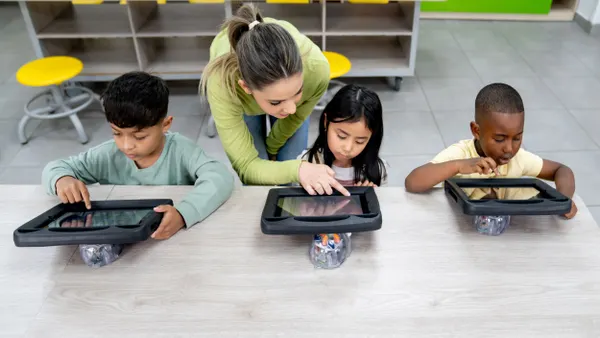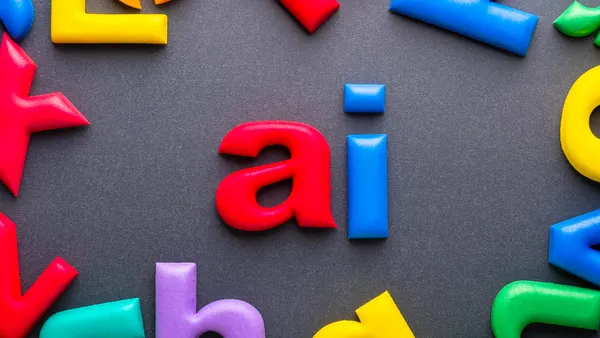Dive Brief:
- Embracing a “21st century” classroom with its 1:1 device programs, interactive seating arrangements and student-led learning requires a significant shift in classroom management strategies.
- Arizona teacher Jamie Schnepp writes for EdSurge that relinquishing some level of control over the classroom was a difficult step for her, but she advises other teachers to consider establishing rules and procedures to guide new classroom arrangements and create learning contracts students can sign and refer back to throughout the school year.
- Schnepp also suggests teaching students how to have thoughtful discussions through role-play and “sentence frame” guides, and she says sharing the purpose of classroom changes with students and parents can help smooth the transition and generate buy-in.
Dive Insight:
Districts and schools are working toward a School 2.0 model that incorporates the best of technological and pedagogical advances while responding to a shift in the global economy that requires new skills of students. Individuals are approaching the path to School 2.0 differently, but there is a widespread recognition that classrooms have to change to best prepare students for life after high school, whether that means college or career.
In addition to a preference for more engaging, tech-infused lessons, the School 2.0 concept asks schools to think about the space in which students learn. Schnepp offers her students four different types of seating (floor seating, raised seating, stability balls and covered crates), but districts can think about classroom and even entire school design to improve student outcomes.











